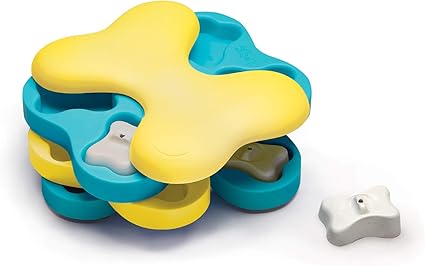Dogs, like us, can have food preferences. While some dogs will eat almost anything you put before them, others can be picky. Ensuring your dog is still getting the nutrition they need for a healthy life, even if they’re not excited about their food, is essential.
Understanding Why Your Dog Is Picky
Before finding out how to feed your picky eater, it’s crucial to understand their unique preferences and why they may be turning their nose up at food. Common reasons include:
Health Issues:
Dental, digestive, or other health concerns can make eating uncomfortable.
Behavioral Factors:
Some dogs develop picky eating habits if given too many table scraps or treats.
Food Preferences:
Dogs have taste preferences like us, and some may not like your food.
Changes in Routine:
A change in environment or schedule, such as moving to a new home or having different feeding times, can upset a dog’s appetite.
If your dog’s picky eating behavior is new or accompanied by weight loss, vomiting, or other signs of illness, consult your veterinarian to rule out any medical issues.
Tips for Feeding a Picky Dog
1. Find the Right Food
One of the first steps in managing a picky eater is finding food that suits your dog’s taste while meeting its nutritional needs. Find high-quality dog foods with real meat, fruits, and vegetables as primary ingredients.
Experiment with flavors and textures:
Dogs may prefer wet food to dry kibble or a particular flavor, such as lamb, chicken, or salmon. Try different options to see which one they like.
Consider grain-free or limited-ingredient diets:
Some dogs are sensitive to grains or certain fillers, which can affect their appetite. Grain-free or limited-ingredient foods can sometimes be more tasty.
2. Make Mealtime Fun
As a dog owner, you can make mealtime exciting for your picky eater. Here are some tricks:
Use interactive feeders or puzzles:
These toys make eating more engaging, as your dog has to work for its food. This not only makes mealtime more fun but also stimulates the dog’s mind and can help reduce anxiety or boredom, which can sometimes lead to picky eating.

Rotate foods:
To keep things interesting, you can try rotating different flavors of the same brand or mixing wet and dry foods.
3. Add Healthy Toppers
If your dog isn’t eating their regular food, consider adding healthy food toppers to make it more enticing.
Bone broth:
Adding a little bone broth to dry kibble can soften the food and boost the flavor.
Cooked vegetables:
Dogs often like the taste of lightly cooked vegetables like sweet potatoes, carrots, or peas.
Lean meats:
Shredded chicken, turkey, or beef can be mixed with kibble to encourage eating, but portion sizes should be considered to avoid overfeeding.
4. Stick to a Feeding Schedule
Sticking to a consistent feeding schedule can help build anticipation for meals and maintain a sense of order in your dog’s life. Dogs thrive on routine, and setting meal times can help regulate their hunger.
Limit free-feeding:
If food is always available, picky dogs may graze throughout the day with little interest. Instead, offer food at specific times and remove it after 20-30 minutes if they don’t eat. This helps create a sense of urgency around meals.
Reduce treats:
Overfeeding treats can fill your dog up and lead to not wanting their meals. This can result in a lack of essential nutrients and potential health issues. Limit treats to training sessions and avoid giving table scraps.
5. Avoid Reinforcing Picky Behavior
It can be tempting to offer new food if your dog refuses to eat, but this can inadvertently encourage picky behavior. Instead, stick to a food your dog needs and avoid constantly switching.
Set boundaries:
Stick to it once you’ve found a nutritious food your dog likes. They may refuse to eat it initially, but most dogs will eat when starving.
Don’t give in to table scraps:
Giving your dog human food can cause them not to want their meals, knowing that something better is coming.
6. Consider Health Supplements
Sometimes, picky eaters need to take advantage of essential nutrients. Ask your vet about adding a nutritional supplement to be sure your dog gets everything it needs.
Probiotics:
These can help improve digestion, which can lead to a better appetite.
Omega-3 fatty acids:
Omega-3s can improve coat health and boost overall energy and vitality in fish oil supplements.
When to Seek Help
Regular vet check-ups are crucial for maintaining your dog’s health. If you’ve tried all the above and your dog still refuses to eat or is losing weight, it’s time to consult a veterinarian. They may need to check for underlying medical issues or offer more specialized advice on feeding your picky eater.
Final Thoughts
Feeding a picky dog a healthy diet may require some experimentation and patience, but with the right approach, you can ensure your pet gets the nutrition they need. By trying different foods, adding healthy toppers, sticking to a feeding schedule, and making mealtime fun, you can help encourage better eating habits. Don’t forget to check with your vet if you ever doubt your dog’s eating behavior or overall health.




